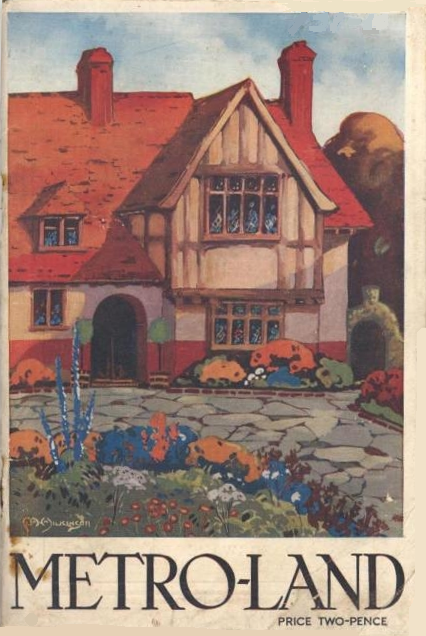Thanks! Since the beginning of the 19th century, with industralization happening on a massive scale, the rich parts of society were already forming some suburbs. Especially the development of the train and the tram -in its earlier stage, a luxury- made it possible for the rich to flee the city centres and build their own suburbs. These were quite different from the sprawl we have now: most rich suburbs then consisted of luxurious villas in the woods, at walking distance from the train station. But this was mostly reserved for the rich elite. What Howard did was to provide a clear, easy way to build large cities where all classes could live. It had massive influences on suburbanization, and before the second World War erupted, England became the most suburbanized country in the world. 1921 poster advocating a suburb connected to London via the Metropolitan Railway. The suburbs you know of (they're worth a post of their own) are a caricature of those cozy English towns and villages. English Garden City are appealing, with a nice town centre, lots of communal buildings, unique houses and green streets and parks. American suburbs on the other hand have even lower densities, no coherent centre, no libraries and other communal buildings and endlessly repeating streets and houses. It would be an amusing parody if it wasn't such a prevailing problem. Well, one of the reasons I started the blog was that I like to inform / educate, and the rich history of planning is an excellent source for ideas and stories. The idea of synthesis had only been introduced to me lately and I wanted to make the link between the two.So, he essentially invented urban sprawl, and suburbs?

What made you happen upon this subject?